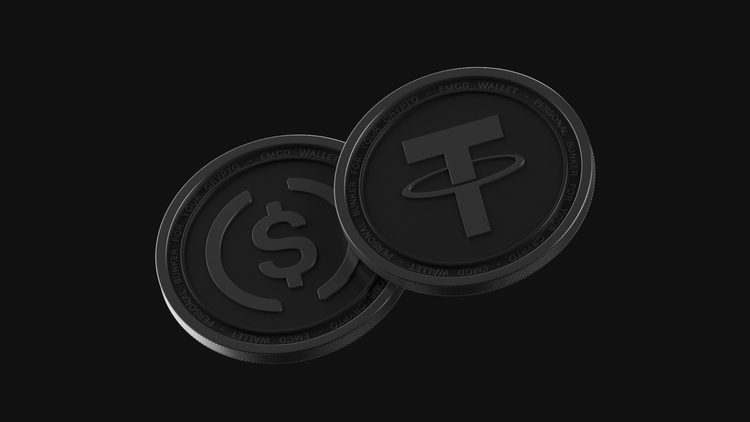How to Make Money on Digital Investments

The idea of how to make money on digital investments has moved from niche to mainstream. Digital assets are no longer just speculative tokens traded on the edge of the internet — they are now part of institutional portfolios, retail apps, and even government experiments. From cryptocurrencies to NFTs and tokenized bonds, these tools are reshaping how investors earn, save, and diversify. This article breaks down the types of digital investments, practical earning methods, and smart strategies for both beginners and experienced investors.
What are digital investments and their types
Digital investments are financial instruments that exist entirely online. They run on blockchain or other digital networks, and their value is secured by cryptographic technology rather than paper contracts.
Main types of digital investments include:
- Cryptocurrencies like Bitcoin, Ethereum, or Solana
- Tokens and staking products that reward users for securing a network
- NFTs and digital art, unique digital items tradable for value
- Tokenized real estate or securities, bridging traditional finance with blockchain
- Stablecoins and DeFi tools offering liquidity and yield
Why does this matter? Because these categories allow investors to access markets that used to be reserved for institutions. Today, anyone with a wallet and internet access can be a global investor.
Main ways to earn from digital assets
There are multiple ways to earn passive income from digital assets, depending on how much time and risk tolerance you have.
- Price appreciation – buy low, sell high (the oldest strategy in finance)
- Staking and yield farming – lock tokens in a protocol to earn new ones
- Lending – provide liquidity to earn interest
- NFT flipping – resell digital collectibles or art
- Trading – profit from volatility via exchanges
Case example: If you bought 1 ETH at $1 000 in 2022 and held it through 2025 (with ETH averaging $3 200), you tripled your capital. Add staking at 4% annual yield, and your total return is even higher.
According to Investopedia, the right choice depends on whether you want predictable yield or are willing to embrace volatility for higher gains.
Investing in cryptocurrency
For many, learning how to invest in cryptocurrency is the first step. Cryptocurrencies are digital assets that operate on decentralized networks without central banks. The most recognized are Bitcoin (BTC) and Ethereum (ETH), but thousands of alternatives exist.
Cryptocurrency remains one of the best digital investments 2025 due to its liquidity, institutional adoption, and the sheer size of its market. According to CoinLedger, Bitcoin is still seen as ‘digital gold,’ while Ethereum powers most decentralized apps.
Income from tokens and staking
Staking is the digital equivalent of earning interest on a savings account — but instead of banks, blockchains pay you. By locking tokens into a proof-of-stake system, you secure the network and receive rewards.
- Ethereum staking yields ~3–5% annually
- Polkadot and Solana sometimes offer 8–12%
- Newer networks may promise higher, though with more risk
Practical example: Staking $2 000 worth of ETH at 4% yield can bring in $80 annually, not counting potential price changes.
Staking is a simple way to earn passive income without trading daily, though investors should be aware of price volatility and possible slashing penalties.
Investing in NFTs and digital art
NFTs (non-fungible tokens) represent ownership of unique items like art, music, or in-game assets. They became famous in 2021 with multi-million-dollar sales but have since matured.
NFTs are still considered digital assets, and while some see them as collectibles, others treat them as investments in digital culture. Platforms like OpenSea and Rarible let investors buy, sell, and trade NFTs.
Risk reminder: NFTs can be illiquid. Buying a $5 000 piece doesn’t mean you’ll find a buyer tomorrow. Unlike Bitcoin, which always has a market, NFTs rely heavily on demand for a specific item.
Trading digital assets on exchanges
Trading is where digital investments feel closest to traditional finance. Exchanges offer spot markets, futures, and derivatives, enabling users to profit from price swings.
Main formats include:
- Spot trading (instant buy/sell)
- Futures and options (contracts on future prices)
- P2P trading (direct user-to-user deals)
Transition: While NFTs can feel like art galleries, trading is closer to Wall Street — fast-moving, data-driven, and often requiring discipline.
Some exchanges also provide ‘demo accounts’ to learn trading without financial risk, making them accessible for beginners.
Risks and how to minimize them
Digital investments offer high potential, but also unique risks:
- Volatility – prices can swing 20% in a single day
- Security – hacks or scams can lead to losses
- Regulation – unclear laws in some countries add uncertainty
Risk management strategies:
- Diversify across crypto, NFTs, and stablecoins
- Use hardware wallets for long-term storage
- Start with small amounts until you gain confidence
Follow trusted digital crypto news sources instead of hype channels
As Blockpit notes, good risk management often matters more than chasing the highest yields.
Popular platforms for digital investments
The platform you choose determines both your security and your returns.
| Platform | Focus | Strengths | Best for |
| Binance | Global exchange | Wide asset selection, low fees | Active traders |
| Coinbase | Regulated US exchange | Simplicity, compliance | Beginners |
| EMCD | Mining & earning | Coinhold wallet, daily interest, top-10 BTC pool | Passive earners |
| OpenSea | NFT marketplace | Largest NFT catalog | Collectors |
| Mintos | Tokenized lending | Alternative finance | Diversifiers |
Transition: The best digital investments 2025 won’t just depend on the asset itself, but also on choosing platforms that balance security, yield, and usability.
Tips for beginner investors
For those exploring digital investment strategies for beginners, here are practical steps:
- Start small – even $50–$100 is enough to learn
- Focus on liquidity – use Bitcoin, Ethereum, or stablecoins first
- Set clear goals – do you want income with staking or long-term growth?
- Learn continuously – follow courses, communities, and guides
- Review monthly – track your portfolio, adjust, and don’t overreact to short-term moves
Beginners often do better when they focus on learning before earning. Patience is a hidden investment strategy.
FAQ
Which types of digital investments are the most profitable?
High-risk altcoins or NFTs can generate big returns, but staking and stablecoins offer steadier income.
How much do you need to invest to start earning?
Some services start at $10. The amount depends on your financial goals.
How can you reduce risks when investing in digital assets?
Diversify, use secure wallets, and stick to regulated platforms.
Which platforms are best for trading and investments?
Binance for trading, Coinbase for simplicity, EMCD for daily interest, OpenSea for NFTs.
What is staking and how profitable is it?
It’s locking tokens in a blockchain to earn yield, often between 3–12% annually.
Can you make money on digital investments without experience?
Yes, by starting with simple services like savings wallets, stablecoins, or index products.
Conclusion
Digital investments are no longer an experiment — they’re becoming part of everyday portfolios. From cryptocurrencies to tokenized real estate, there are many ways to participate. The way to earn depends on your risk tolerance, platform choice, and willingness to learn.
The best digital investments 2025 will be those that combine innovation with security. For new investors, the smartest strategy is simple: start small, use regulated platforms, and focus on learning. In this market, patience often pays more than hype.




